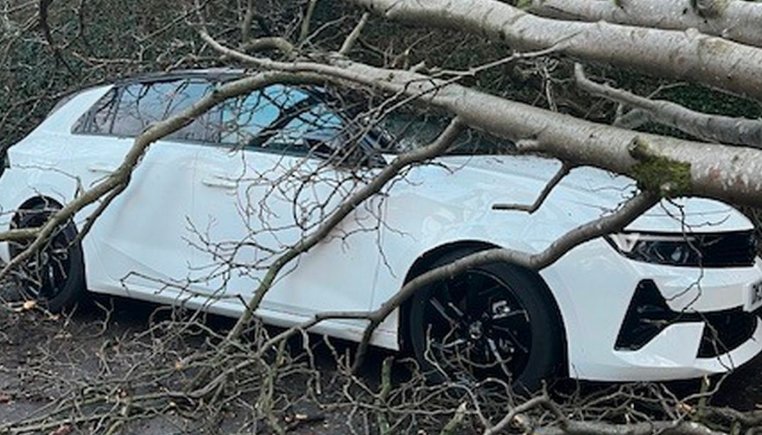Travel across Scotland remains disrupted, and many are still without power as the aftermath of Storm Éowyn continues to affect the country. With emergency teams working around the clock, the public is being asked for patience as recovery efforts continue.
Widespread Travel Disruption
In the wake of Storm Éowyn, Scotland’s transport network is experiencing major disruptions. Train and ferry services remain suspended, and most roads, although cleared, still pose a threat to travelers. With damaged infrastructure and ongoing repair work, it’s unclear when normal service will be restored across the country.
- Train Services: Although Network Rail Scotland has cleared tracks in certain areas, most train lines remain closed. Inspections are ongoing, including aerial checks with helicopters to ensure the safety of tracks and stations. More than 400 incidents of damage were reported, including over 120 fallen trees and debris on the lines.
- Ferry Cancellations: CalMac services have been severely impacted, with cancellations on major routes like Kennacraig to Port Askaig and Gourock to Dunoon. Replacement buses are running for some routes, but ferry users should check timetables before traveling.
- Bus Services: Bus services have also been affected by the storm’s aftermath. Travelers are advised to check with their operators for real-time information regarding routes and cancellations.

Power Outages and Repair Work
Storm Éowyn caused extensive power outages across Scotland, leaving tens of thousands without electricity. Although progress has been made, the restoration of services is slow, and many customers may face delays of several days.
- Scottish Power’s Efforts: Scottish Power has restored power to around 192,000 customers, but damage from high winds, snow, and ice continues to complicate repair work. The utility company received over 52,000 calls in a single day, a month’s worth of calls in just 24 hours.
- Scottish and Southern Electricity Networks: SSEN has managed to restore power to 75,300 customers, but there are still areas facing significant challenges due to the storm’s severity. These delays are especially frustrating for those in more remote locations, where damage is more severe.
Despite these ongoing challenges, Scottish and Southern Electricity Networks is working tirelessly to reconnect homes and businesses across the country.
Storm Damage and Injuries
The storm not only caused widespread disruption but also led to significant damage and injuries. A single-vehicle collision in Mauchline, East Ayrshire, left one person seriously injured, while a falling tree struck a van in Glasgow, injuring another individual. These incidents are a grim reminder of the storm’s power and the dangers of weather-related accidents.
- Helensburgh Leisure Centre: One of the most visually striking impacts of the storm was the damage to the leisure center in Helensburgh. The roof was torn off, leaving significant destruction behind. This is just one example of the extensive damage caused across the country, from smashed bus stops to collapsed buildings.
While emergency responders continue to attend to these incidents, local authorities are urging residents to remain cautious as the storm’s aftereffects linger.
Ongoing Weather Warnings
Two yellow weather warnings remain in effect in Scotland as of Saturday evening. The warnings are for snow and ice, which are expected to affect most of the mainland, and high winds that will impact the far north-west coast and Western Isles. These warnings are set to last through Sunday morning, adding to the already challenging conditions.
- Snow and Ice: The ice and snow warning covers most of Scotland’s mainland. Dangerous driving conditions and possible travel delays are expected as temperatures drop, making travel conditions hazardous.
- Wind Warnings: High winds continue to batter the far north-west and Western Isles. Gusts have already reached up to 102mph, and these winds could cause further disruptions to power and transport services.
Efforts to Restore Normalcy
The Scottish government has called for patience from the public as recovery efforts continue. First Minister John Swinney acknowledged the significant impact of Storm Éowyn and emphasized the ongoing efforts to restore power and transport services.
In a statement, Swinney said, “Power company staff and our public servants are working at speed to restore services, but it will take some time to complete.”
Despite the storm’s devastating impact, there is some relief in the fact that fatalities were limited, with only one reported death in the Republic of Ireland. Meteorologists, like Jim Dale from British Weather Services, have noted that the storm was well-forecasted, which likely helped reduce casualties.
However, the scale of the damage and the slow recovery process means that many people will continue to experience hardships for some time.


















